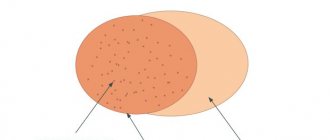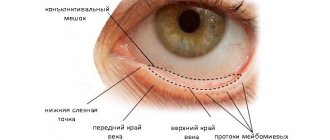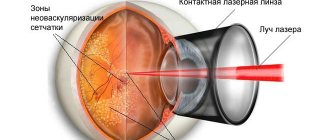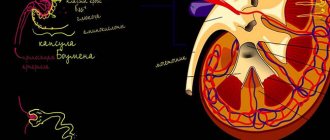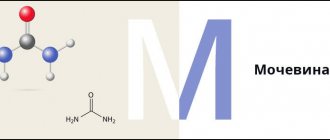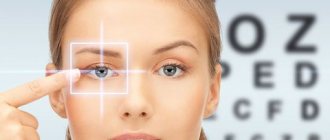The feeling of tingling and crawling throughout the body during sleep is familiar to many. Most often this goes away quickly. But sometimes this feeling is so pronounced that it frightens: the body ceases to obey its owner. How dangerous is this condition and when, according to experts, should you seek medical help?
How does body numbness manifest?
The body often goes numb during sleep. This is manifested by a feeling of coldness, tingling, crawling, aching pain, itching. When you try to change the position or move the numb part, the unpleasant phenomena first intensify and then pass.
Sometimes numbness covers the entire body and the person cannot immediately move. This frightens him, and the state of stress can increase numbness and anxiety. What to do, how to correctly assess your condition and get out of it?
First of all, you need to calm down and understand the causes of numbness.
General information
Why do a person’s hands go numb in a dream? What does this mean? By the word “painful,” patients mean numbness and hardening of the hands, accompanied by tingling, “crawling” and burning. This manifestation is associated either with circulatory disorders of the upper extremities or with innervation disorders.
Doctors call the numbness paresthesia. Most often it is caused by natural causes. However, in some cases this may be one of the signs of various pathologies. After all, in a person’s sleep, the symptoms of diseases often worsen. While awake, the patient does not always notice unpleasant sensations.
Why does the body go numb during sleep?
The reasons may be physiological or pathological.
Physiological reasons
This is, first of all, being in an incorrect position for a long time. The symptoms are aggravated by a too soft bed, a high pillow, the habit of falling asleep with your arms resting on you, etc. As a result:
- small blood vessels in a certain area of the body are pinched and characteristic signs appear;
- the nerve endings of the peripheral nerves are pinched - the same sensations arise;
- the cervical spinal roots are pinched when the head is thrown back during sleep; if only sensory fibers are affected, then numbness of the arms and neck is a concern, but if motor fibers are also affected, it is difficult to move; This is what scares me the most, but it all goes away quite quickly.
Pathological causes
There can be many pathological reasons:
- Peripheral circulation disorders. Most often this happens:
- in the hands - occurs mainly in women and may be the first sign of Raynaud's disease - angioneurosis, leading to persistent spasm of small blood vessels and even gangrene of the fingers; the main reason is prolonged stress;
- in the legs - occurs mainly in men who smoke and can be a sign of obliterating endarteritis - inflammatory damage to small vessels, leading to their complete obstruction (obliteration) and gangrene;
- Peripheral nerve disorders - polyneuropathy. Metabolic disorders may be the cause, including:
- diabetes;
- chronic alcoholism;
- lack of certain vitamins (group B) and minerals (magnesium, etc.).
- Central nervous system disorders:
- blockage of the artery supplying the brain with a blood clot, its sharp spasm or rupture of the wall and hemorrhage in the brain - the first sign may be a feeling of numbness and inability to move;
- pinching of the spinal nerve roots due to osteochondrosis, scoliosis and other diseases of the spine;
- brain tumor.
- Diseases of joints and ligaments:
- arthritis is an inflammatory process, the soft tissues of the joint swell, squeezing small blood vessels and nerve endings, hence the feeling of numbness;
- arthrosis – metabolic disorders in the joint, leading to the destruction of cartilage and the growth of bone tissue, compressing blood vessels and nerves;
- systematic performance of work that causes tension in the hand and fingers; As a result, the tendons become injured and swell, and the nerve endings are compressed. The disease is called carpal tunnel syndrome; its first sign is a feeling of numbness in the affected arm.
Numbness of the right hand: causes
The causes of paresthesia can be different: from temporary factors to serious diseases. It is necessary to determine the cause as soon as possible, since treatment tactics depend on this.
Causes not related to illness
Brief numbness in the right hand is often not associated with a serious illness. The development of symptoms is influenced by the following factors:
- uncomfortable posture during sleep;
- tight clothing that squeezes the shoulders;
- monotonous work, including flexion and extension of the hand;
- sitting at a computer for long periods of time without breaks.
The right hand goes numb more often, as it is the leading hand when performing various types of work.
Often, numbness in the right hand occurs in women during pregnancy. This is usually due to fluid retention in the body.
Osteochondrosis
A common cause of paresthesia is damage to the spine - osteochondrosis, intervertebral hernia. The cause of the development of symptoms in osteochondrosis is pinching of peripheral nerves. If the cervical spine is affected, the nerves that innervate the upper limb are pinched.
What signs are characteristic of osteochondrosis of the cervical spine:
- numbness of the hand (usually on one side);
- pain in the neck;
- arm pain;
- dizziness, noise in the head.
The disease most often develops in people over 40 years of age. Heredity, spinal injuries, overload, and a sedentary lifestyle play a role in the development of the disease.
Carpal tunnel syndrome
The most common cause of numbness in the right hand is carpal tunnel syndrome, or carpal tunnel syndrome. The mechanism of development is compression of the median nerve in the carpal tunnel.
The development of the syndrome is influenced by any factors that cause narrowing of the carpal tunnel, tissue swelling, or fluid retention. People whose profession involves performing monotonous hand movements are at risk:
- pianists;
- artists;
- seamstresses;
- carpenters;
- painters;
- sign language interpreters.
The disease often develops in people who spend a lot of time at the computer. It is not so much the duration of work that is important, but the position of the brush.
With carpal tunnel syndrome, there is pain in the hand, numbness, and tingling in the hand.
Treatment
Therapeutic measures depend on the cause of the appearance of unpleasant symptoms, therefore they are prescribed after an examination and a final diagnosis. As a rule, complex treatment is prescribed, which includes:
- drug therapy;
- physiotherapeutic procedures;
- additional treatments;
- traditional methods of treatment.
Drug therapy
For different causes of numbness, various medications are prescribed:
- If peripheral circulation is impaired, the following is prescribed:
- agents that dilate small blood vessels and improve peripheral circulation, preventing the formation of blood clots (Pentoxifylline);
- calming (sedative) and, if necessary, anti-anxiety drugs - infusions of valerian, motherwort, Seduxen, etc.
- In case of disturbances due to polyneuropathy, treatment is carried out for the disease that caused this pathology (diabetes mellitus, etc.).
- If the cause is an inflammatory process and swelling in the tissues, compressing blood vessels and nerves, medications from the group of non-steroidal anti-inflammatory drugs (NSAIDs - Diclofenac, Nimesulide) are prescribed.
- In case of stroke, complex treatment is prescribed to eliminate the consequences of the vascular accident.
- In case of metabolic disorders, intravenous drip administration of substances necessary for proper metabolism is prescribed: amino acids, B vitamins, minerals, etc.;
Physiotherapeutic procedures
For numbness of the body due to vascular pathology, the following is prescribed:
- thermal procedures - paraffin, mud;
- magnetic therapy;
- electrophoresis with antispasmodics (vasodilators) and sedatives.
For polyneuropathies:
- magnetic therapy;
- diadynamic currents (DDT);
- amplipulse therapy.
For osteochondrosis:
- DDT;
- electrophoresis with painkillers and anti-inflammatory drugs.
Additional treatments
Additional treatments include:
- massage, manual therapy;
- physiotherapy;
- reflexology – acupuncture, acupressure, warming with wormwood cigarettes; special acupuncture points (AP) are impacted - a method of traditional Chinese medicine that has been proven for centuries;
- psychotherapy - prescribed for neuroses, including angioneuroses, which include Raynaud's disease.
Traditional methods of treatment
Traditional methods of treatment can also be used, but only after consulting a doctor. Here are some recipes:
- boiled rice - removes excess liquid, relieves tissue swelling; prepared at the rate of 40 g of rice per 250 ml of water; round rice needs to be soaked overnight, rinsed in the morning and filled with water; bring the water to a boil four times, after which the rice is washed each time; the finished rice is eaten, then nothing is eaten or drunk for 4 hours; the procedure is repeated daily for 1.5 months; since this removes magnesium from the body, you need to eat bananas, raisins and baked potatoes;
- alcohol tincture based on bay leaves - rubbing for hands and feet; prepared at the rate of 15 laurel leaves per 500 ml of vodka; infuses for three days.
Traditional recipes for numbness
Alternative medicine is not the main method of treatment; if there is no predisposition to allergic reactions, it is possible to use recipes from traditional healers, but only after consulting a doctor.
Popular recipes:
- To rub numb areas, use the following composition: 50 ml of 10% ammonia solution, 4 drops of camphor alcohol, 30 grams of table salt. All ingredients are mixed and rubbed into the affected areas.
- A compress of pumpkin and wheat germ has an anti-inflammatory effect. Boil a piece of pumpkin and beat it into a puree. A tablespoon of sprouts is added to the pulp and the resulting mixture is applied to the numb areas, secured with cling film and covered with a warm blanket. The compress can be kept for about an hour.
- For the contrast procedure, prepare two deep bowls. Pour hot water into one, cool water into the other. First, immerse your hands in hot water for 5 minutes, then transfer your hands to cold water and leave for 2 minutes. Alternate water 5-6 times.
- Add a few drops of eucalyptus essential oil to the camphor ointment. Rub the mixture into your fingers and palms every evening.
Why does the right side of the body go numb?
In the absence of external factors, a decrease in sensitivity on the right side of the body is caused by diseases of the brain associated with a decrease in its blood supply.
There is no need to treat it negligently. Pathologies that cause numbness on the right side of the body:
- Damage to the spinal nerves or radicular syndrome. Occurs due to the development of diseases and pathologies of the spine: osteochondrosis, spina bifida, osteoarthritis, osteoporosis, birth defects, compression injuries. Disturbances in the functioning of the spinal nerves are caused by diseases that cause destruction of spinal tissue: tuberculosis, osteomyelitis.
- Stroke. Loss of sensation in the limbs is one of the symptoms of acute disruption of the blood supply to the brain. The affected part of the nervous system stops working, which affects the functioning of the corresponding organs. With a stroke, unilateral numbness of the body is most often recorded.
- Tumors and cysts of the central nervous system. New growths in the brain and spinal cord compress the surrounding tissues. Because of them, the organ stops receiving nutrients. This causes dysfunction of the corresponding part of the body. Later, numbness is joined by: headache, loss of appetite, apathy, parasthesia, weakness and impaired motor functions of the body. Numbness and other signs of pathology do not appear immediately and intensify over time.
- Multiple sclerosis. The disease is characterized by the destruction of the myelin sheath of nerve fibers, which ultimately leads to a slowdown in the conduction of nerve impulses. This pathology is chronic and does not appear immediately. At first, the patient may complain that his limbs (hands, feet) have become numb. Other signs of malfunction of the central nervous system appear: decreased vision, hearing, memory impairment.
- Diabetes. Metabolic disorders in the body affect its performance and the functioning of the nervous system. In diabetes, the nerves stop receiving nutrients, which leads to degeneration of the nervous tissue.



